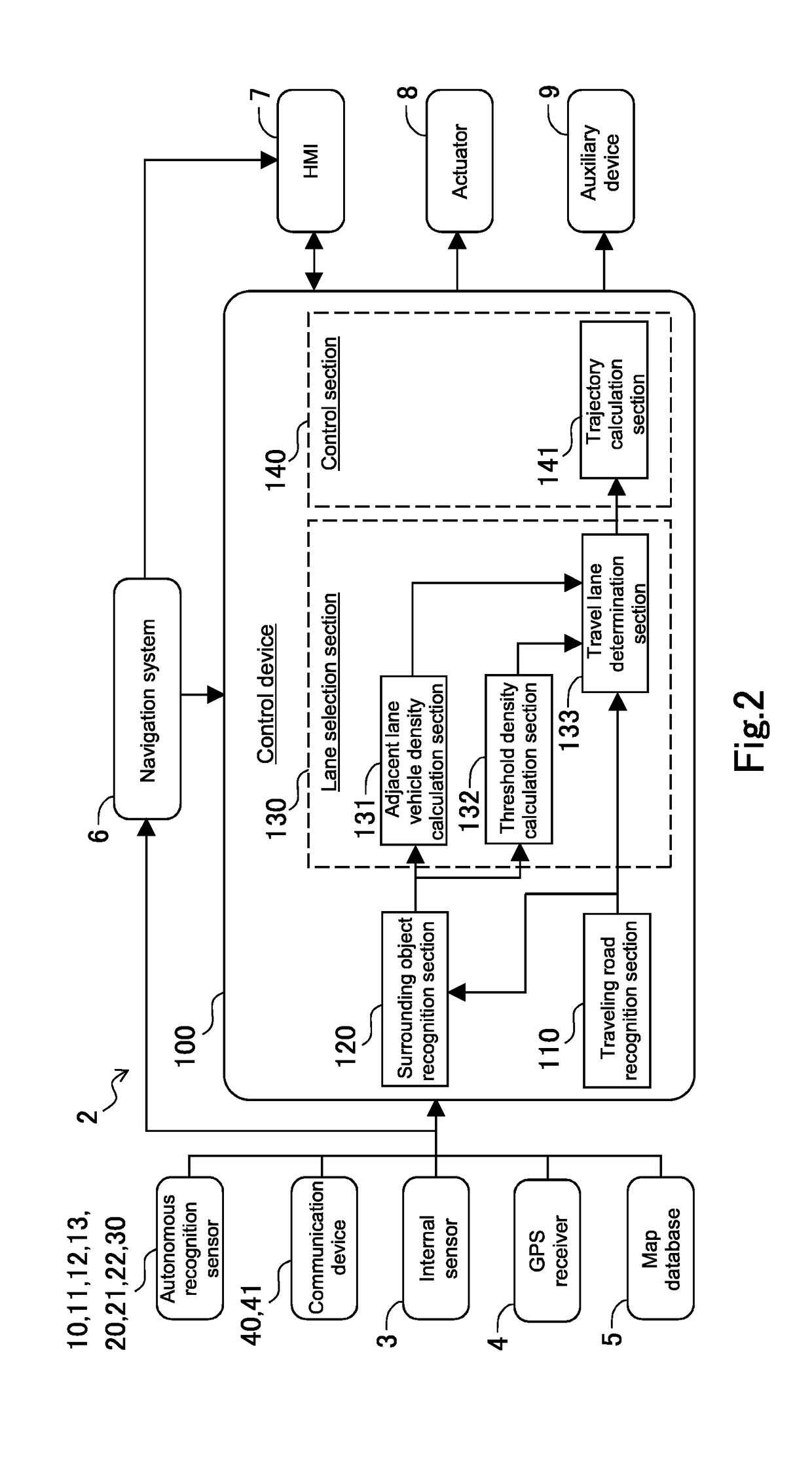Autonomous driving system
- Summary
- Abstract
- Description
- Claims
- Application Information
AI Technical Summary
Benefits of technology
Problems solved by technology
Method used
Image
Examples
first embodiment
1-1. Configuration of Autonomous Driving Vehicle
[0028]FIG. 1 is a view illustrating an example of an autonomous driving vehicle on which an autonomous driving system according to a first embodiment is mounted. The autonomous driving system performs autonomous driving of a vehicle on which the system is mounted. Note that autonomous driving means that driving operations such as acceleration, deceleration and steering of a vehicle is executed without a driving operation of a driver.
[0029]As illustrated in FIG. 1, a vehicle 1 mounted on the autonomous driving system includes an autonomous recognition sensor for directly acquiring information concerning a road on which the vehicle 1 is traveling and information concerning objects that are present in the surroundings of the vehicle 1. The autonomous recognition sensor includes at least one of LIDARs (LIDAR: Laser Imaging Detection and Ranging) 10, 11, 12 and 13, radars 20, 21 and 22 and a camera 30. Further, the vehicle 1 includes a comm...
second embodiment
[0063]An autonomous driving system according to the present embodiment has the configuration illustrated in FIG. 2 as in the autonomous driving system according to the first embodiment, and is mounted on the autonomous driving vehicle illustrated in FIG. 1. A difference between the autonomous driving system according to the present embodiment and the autonomous driving system according to the first embodiment lies in the calculation method of the threshold density by the threshold density calculation section 132.
[0064]In the present embodiment, the threshold density calculation section 132 acquires a forward inter-vehicle distance between the own vehicle and the preceding vehicle that is included in the recognition information of surrounding objects. In an example illustrated in FIG. 3, a forward inter-vehicle distance between the own vehicle 1 and the preceding vehicle 201 traveling in the own lane L2 is acquired.
[0065]The threshold density calculation section 132 calculates a thre...
third embodiment
[0068]An autonomous driving system according to the present embodiment has the configuration illustrated in FIG. 2 as in the autonomous driving system according to the first embodiment, and is mounted on the autonomous driving vehicle illustrated inFIG. 1. A difference between the autonomous driving system according to the present embodiment and the autonomous driving system according to the first embodiment lies in the calculation method of the threshold density by the threshold density calculation section 132.
[0069]In the present embodiment, the threshold density calculation section 132 calculates the vehicle density in the own lane as the threshold density. As illustrated in FIG. 3, vehicles recognizable in the own vehicle travel lane L2 are only the preceding vehicle 201 and the following vehicle 202 in closest vicinities, and it is difficult to recognize the other vehicles because the other vehicles are in blind spots of the autonomous recognition sensors 10 to 13, 20 to 22 and...
PUM
 Login to View More
Login to View More Abstract
Description
Claims
Application Information
 Login to View More
Login to View More - R&D
- Intellectual Property
- Life Sciences
- Materials
- Tech Scout
- Unparalleled Data Quality
- Higher Quality Content
- 60% Fewer Hallucinations
Browse by: Latest US Patents, China's latest patents, Technical Efficacy Thesaurus, Application Domain, Technology Topic, Popular Technical Reports.
© 2025 PatSnap. All rights reserved.Legal|Privacy policy|Modern Slavery Act Transparency Statement|Sitemap|About US| Contact US: help@patsnap.com



